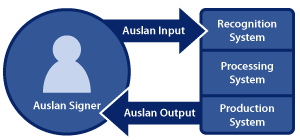Dr Jessica Korte
Qualifications & Experience
Jessica has received her Doctor of Philosophy her creation of YoungDeafDesign, a design method which supports working with young Deaf children through Griffith University and holds a Bachelor of Information Technology (Advanced) with Class I Honours, also from Griffith University. Her previous academic roles have been a mix of teaching-focused and teaching-and-research at Griffith College, Griffith University and the University of Queensland. She has basic Auslan skills acquired from Auslan 1 and 2 short community courses through Deaf Services Queensland. Jessica is also an Affiliate Member of the Centre of Excellence for the Dynamics of Language.
Background
Dr Jessica Korte is passionate about the ways good technology can improve lives. To ensure technology is “good”, she advocates involving end users in the design process; especially when those people belong to “difficult user groups”- which usually translates to “minority”. Her philosophy for technology design (and life in general) is that the needs of people who are disempowered or disabled by society should be considered first; everyone else will then benefit from technology that maximises usability. This philosophy holds true in her TAS Fellowship Project, the Auslan Communication Technologies Pipeline project, which looks to foreground the visual-gestural language expertise of Deaf signers in the creation of technologies for the recognition, production and processing of Auslan (Australian Sign Language) communication.
TAS Research
The Auslan Communication Technologies Pipeline project is a three-year project which will develop a modular pipeline of artificial intelligence systems. The Recognition System will be a machine learning model trained to recognise conversational Auslan. The Production System will generate artificial yet human-like Auslan signing. The Processing System will take the input from the Recognition System, process it, and generate output through the Production System. The exact form of the Recognition System will be decided in consultation with members of Australia’s Deaf community, but could be a chatbot, digital assistant, teaching tool or a translation system.

This research, and gestural human-machine interaction (G-HMI) more broadly, has significant potential for use in co-operative and social robotics, through explicit gestural interfaces, and robots with human-like implicit awareness of body language and gesture. This research’s focus on interaction via lexicalised and non-lexicalised signing as used by diverse individual visual-gestural communicators provides a basis for machine recognition and understanding that could underlie DST’s Kelpie project, as it may result in an approach to encoding multimodal language such that a robot could understand real-time messages communicated robustly in operational environments, with support for inter-signer variability in message production. By extension, it may also form a basis for more general encoding, able to capture signing, speaking, non-language gestures and abstract representations of the environment, for context-aware processing by autonomous systems.
Recent Blog on the research: Auslan Communication Technologies Pipeline: Creating “Alexa for Auslan”
Contact Information
Email: j.korte@uq.edu.au

